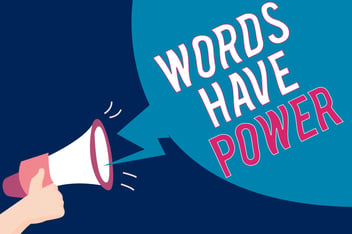From Boomers to Zoomers: 6 Ways to Boost Your Membership Mojo with Millennials and Gen Z
Summary: Millennials and Gen Z now make up a huge part of the workforce, but they're not lining up to join membership organizations. Because they think and act so much differently than older generations, here are six specific strategies you can use to better attract and engage younger prospective members.
About an 8-minute read
“Oh joy!” you say. “Another article about Millennials and Gen Z…can’t wait.”
I know much has been written about these two important generational cohorts. But the issues relating to these younger audiences haven’t gone away… and they probably won’t go away any time soon. Especially for membership-based organizations, which still grapple with getting younger people to join or renew.
But first, a little housekeeping.
I know…there are many subtle and even not-so-subtle differences between the two generations, but for the sake of simplicity, I will sometimes refer to both generations as Millennials. That’s because understanding and adapting to all younger people–no matter the generational cohort– remains a challenge for many organizations.
The Growing Decline (it’s not an oxymoron)
 In 2015, something significant happened - Millennials became the largest generation in the workforce, surpassing baby boomers. And in 2024, Gen Z has officially overtaken the boomers in terms of full-time workers. Together, these two generations make up a whopping 40 percent of the U.S. workforce. With their growing numbers, you might assume we would see more younger people joining membership organizations, right?
In 2015, something significant happened - Millennials became the largest generation in the workforce, surpassing baby boomers. And in 2024, Gen Z has officially overtaken the boomers in terms of full-time workers. Together, these two generations make up a whopping 40 percent of the U.S. workforce. With their growing numbers, you might assume we would see more younger people joining membership organizations, right?
Well, it hasn’t happened.
At least not yet. According to a study from 2023, the older generations still dominate the membership scene, with Millennials making up only 21 percent and Gen Z, a mere 9 percent.
Over the last five years, we’ve seen a trend where about half of membership organizations are seeing their member numbers either drop or flatline. It's got a lot of leaders scratching their heads – is this just a blip because of the whole pandemic situation, or are we looking at a sea-change where traditional member-based organizations no longer appeal to a younger crowd?
The Millennial Mind
 As a leader or marketing professional for your organization, you've likely observed significant shifts in how we communicate with our constituents. It's as if the rules of marketing are evolving right before our eyes. Whether it's the advancements in AI, digital marketing, data management, or the pervasiveness of social media, the impact of technology continues to change and is especially influential on how we go about inspiring, persuading, and communicating with prospective members.
As a leader or marketing professional for your organization, you've likely observed significant shifts in how we communicate with our constituents. It's as if the rules of marketing are evolving right before our eyes. Whether it's the advancements in AI, digital marketing, data management, or the pervasiveness of social media, the impact of technology continues to change and is especially influential on how we go about inspiring, persuading, and communicating with prospective members.
All of this leads to needing to take a deeper dive into why these vibrant, tech-savvy generations are so shy about clicking the 'renew' button or even joining in the first place. As a baby boomer myself, I know I bring my own biases to this issue, yet after looking at all the available data I can find, I’m still convinced that engaging younger generations is doable. However, it requires a different, more nuanced approach.
Understanding the Millennial and Gen Z Mindset
Before we dive into the strategies of how to engage younger members, let’s unpack a few of the key data points that support those strategies. I won’t pretend that this is an exhaustive list of characteristics, but for our purposes here, I believe these are the most relevant.
Here are the five most significant characteristics that make Millennials/Gen Z so unique from a membership marketing perspective, starting with the most obvious:
- Tech, tech, and more tech: This is the hallmark of the Millennial cohort, so we all should be aware of the digital divide. We know Millennials have grown up in a digital world. They’re fluent in the language of technology, something that doesn't always come as naturally to boomers like me whose tech reference points are rotary phones and library index cards. Millennials/Gen Z were practically born with a smartphone in their hand, while we boomers and GenXers had to learn the language of tech along the way. Unlike Millennials, we older generations often miss out on or even ignore some of the subtle yet important shifts in the tech landscape. We often find ourselves playing catch-up on newly introduced technologies, assuming we recognize that we’ve fallen behind in the first place. Younger gens, however, just seem to get it. They are far more comfortable with just about any new tech, so if your organization smacks of being old school, you could easily become irrelevant to Millennials.
- Experiences vs. Stuff: The differences don't stop at technology. For Millennials and Gen Z, their focus is more about collecting experiences rather than stacking up more stuff. That's a major shift compared to us baby boomers who grew up aiming for job security, a nice home, and a comfortable pension. Millennials grew up in an era where the largest retailer–Amazon– doesn't own any products, the largest transportation company–Uber–doesn't own any vehicles, and the largest hotel chain- Airbnb–doesn't own any hotels. No wonder Millennials have come to the realization that owning something isn't all it's cracked up to be. Why bother owning a car when you can more easily hire a driver at a similar cost to buying a vehicle, but avoid all the accompanying burdens and worries that come with ownership? For Millennials, investing in new experiences, instead of material possessions can lead to a greater sense of happiness and well-being. An amazing experience has the power to bring immense joy and fulfillment. While we boomers and GenXers may often connect our identity to our things, younger generations believe they are the sum of their experiences.
- Life Course Trajectory: The life course trajectory of “middle-class” baby boomers was to become self-sufficient as early as possible. We typically got a driver’s license and a job in our teens, went to college, or otherwise moved out of our parent’s home by our late teens, then eventually started a family in our mid to late twenties. This study found that younger people are more likely to postpone marriage as compared to baby boomers. Boomers were more than twice as likely to be married with children by age 35, as compared to Millennials. A study by the University of Cambridge found that overall, Millennials are more likely to work in low-paying jobs and live with their parents as compared to older generations. Many Millennials are less interested in pursuing “high-status occupations,” often because they want to avoid the demands of marriage and parenthood. However, Millennials who choose to embrace a more typical “middle-class lifestyle” were found to have more wealth than their boomer counterparts did at the same age. Dr. Rob Gruijters, lead author of this Cambridge study said the ongoing debate about whether Millennials are worse off than boomers is simply a distraction. “The crucial intergenerational shift has been in how different family and career patterns are rewarded. As the study indicates, this singular decision to postpone marriage and, more particularly, starting a family, has created a huge gap in cultural values, even among Millennials themselves. This finding could help your organization better target the sub-group of Millennials who are more likely to share your organization’s culture and goals.
- Collaboration vs. Independence: This gap in “life course trajectory” mentioned above also impacts Millennials’ views about what motivates them to achieve their goals. Although the conventional stereotype suggests that Millennials are lazy and narcissistic, the truth is, as a group, they’re well aware of their limitations, but they’re also quite ambitious.
 This study shows that roughly three-quarters of Millennials want to run their own business someday. And GenZ is also more oriented to entrepreneurship than older generations, preferring to call the shots, than work in a team environment. Call it a lack of trust, or even a survival mechanism to avoid relying on others, but typically Millennials prefer to perform tasks they can complete alone, rather than engage as a team where success depends on others. This also translates to a desire to work at jobs where they are motivated to achieve success on their terms. Consequently, they tend to be less interested in doing whatever it takes to “earn a job promotion quickly,” but they’re happiest when they can control the outcome of a project on their own. This can impact membership organizations when it comes to finding ways to engage younger generations. You’ll want to be mindful of a significant segment of younger people who are NOT motivated by appeals to “join” or “team up,” but are more interested in an appeal that communicates “your membership matters.”
This study shows that roughly three-quarters of Millennials want to run their own business someday. And GenZ is also more oriented to entrepreneurship than older generations, preferring to call the shots, than work in a team environment. Call it a lack of trust, or even a survival mechanism to avoid relying on others, but typically Millennials prefer to perform tasks they can complete alone, rather than engage as a team where success depends on others. This also translates to a desire to work at jobs where they are motivated to achieve success on their terms. Consequently, they tend to be less interested in doing whatever it takes to “earn a job promotion quickly,” but they’re happiest when they can control the outcome of a project on their own. This can impact membership organizations when it comes to finding ways to engage younger generations. You’ll want to be mindful of a significant segment of younger people who are NOT motivated by appeals to “join” or “team up,” but are more interested in an appeal that communicates “your membership matters.”
- Making a Difference: Many young people are eager to make an impact, be it in their careers, how they vacation, and how they otherwise spend their money. Many are big into social and political causes and want to find ways to “make a difference.” According to a study conducted by Deloitte, 84% of Millennials believe “it’s their duty to change the world.” We boomers were once engaged in social and political issues, but there's a different kind of unity and commitment among these younger generations. They’re greatly concerned about inclusivity. In how society, technology, and the economy come together to shape different attitudes and lifestyles. They are more likely to be distrustful of big, monolithic institutions like Congress, the news media, and large tech companies. They also seem to have greater trust in doctors, hospitals, and health care workers, yet they also despise “Big Pharma.” Here’s the takeaway: younger generations will trust you only when your organization has earned it. You must live your values at all times, even when you’re under pressure from activists or critics.
6 Strategies to Better Engage Millennials/GenZ
Now we get to the heart of the matter.
After spending the last few decades helping leaders grow membership organizations and non-profit groups, I’ve seen how a few simple strategies can help you attract and retain a younger audience without alienating your older audience. Here are six actionable ways to engage a younger demographic:
Strategy #1: Hyper-focus on your Value Proposition
Millennials and Gen Z are pretty careful when it comes to where they spend their money, and who can blame them? They've grown up in a world where economic ups and downs are the norm, and events like the Great Recession and the pandemic just reinforced their insecurity and uncertainty about money.
So, when they're looking at joining any organization, they're not just after a cool membership card. They want to know they’re getting real value for their money. For organizations looking to get these young professionals to join, it’s key to offer benefits that are more than just fluff – think professional growth and networking opportunities. If you’re already delivering on those, then your next focus should be on offering powerful, everyday perks that genuinely add value to their lives.
Personal biases aside, I speak from years of experience when I say that the quickest and easiest ways to add value to your organization is by launching a white-labeled discount platform. It can be a strategic move for many reasons, not the least of which is that it can be a low-cost engagement tool to help prospective members overcome their financial reservations about joining or renewing.
When you offer consumer discounts at popular places like restaurants, shops, movie theaters, or travel, you’re appealing to the younger crowd who has learned to love a good bargain. And when they can save on everyday purchases, it can be a huge draw for your organization. It can not only enhance the overall value proposition of your organization, but it also regularly engages members by providing them with continuous, tangible benefits. This makes being a member far more attractive and worthwhile.
Strategy #2: Focus on Digital Engagement
The digital divide mentioned earlier can significantly impact member retention, especially among the younger demographic. As digital natives, Millennials and Gen Z don't just appreciate tech-driven experiences; they pretty much expect it from any organization they're a part of. It starts with breaking out of your old-school communication methods–like long-form newsletters– that’s a huge red flag for younger audiences.  They're looking for digital interactions that are slick, quick, and engaging. They crave platforms where everything is at their fingertips – instant info, video, interactive features, and a sense of being part of a digital community that gets them interested and excited about being a member.
They're looking for digital interactions that are slick, quick, and engaging. They crave platforms where everything is at their fingertips – instant info, video, interactive features, and a sense of being part of a digital community that gets them interested and excited about being a member.
That’s why your organization needs to dial up your digital presence. (Boomer pun intended). Unfortunately, according to this study, many organizations still struggle with significant issues like “legacy technology, data silos, and poor integrations,” where each can be a significant roadblock to digital engagement.
Membership organizations need to honestly assess their "digital experience maturity." That means assessing your organization's ability to both measure AND deliver on a sophisticated digital member experience across multiple touchpoints.
Merely attracting members to your website won't cut it. It’s imperative to provide an exceptionally personalized customer experience across all your communication channels… your website, mobile site, apps, and social channels. This will ensure that your members feel welcomed, valued like VIPs, nurtured, and impressed at every step of their digital journey with your organization.
Strategy #3: Embrace Personalization
Let's talk about ways to make your members feel like VIPs.
Personalization matters, especially with younger people. They’re accustomed to having things tailored just for them – whether it’s when they’re shopping online or just doomscrolling. They expect the same type of curated experience from any organization they align with. From your emails to your membership benefits, it’s a big deal to personalize every message.
This article shows the incredible impact of personalization on member/customer satisfaction and engagement. By aligning interactions with individual preferences and behaviors, organizations can create remarkable and relatable experiences for each member, fostering a profound emotional connection and boosting loyalty. However, successfully implementing personalization functions requires a solid foundation in collecting and analyzing member data, crafting personalized marketing strategies, tailoring your member service functions to identify and respond to members as individuals (instead of just nameless/faceless members), and developing programs and services that cater to the unique needs of each member.
Above all… stop the email blasts! They’re old-school, outdated, ineffective, and wasteful. But don’t just take my word for it. Check out articles here and here detailing why email blasts are a relic from bygone days. And this isn't just a matter of keeping younger members happy. It’s about creating that sense of connection for all generations, giving them personalized reasons to stick around.
Strategy #4: Become Genuinely More Socially Conscious
Communicating the social value of a membership is a powerful strategy for attracting and retaining younger members. It's a big deal these days, especially for these younger members who are keenly focused on social change. When your organization aligns with important social causes, you're not just another old-fashioned club – you're building a team of world changers.
According to best-selling business author Simon Sinek, every organization should start with “finding your noble purpose.” What is your organization’s purpose for existence? When you have defined your purpose, communicating that purpose needs to tap into the desire of young people to associate with something important. Otherwise, supporting the cause-of-the-day will trigger a Millennial’s red flags, and your organization will appear disingenuous and ignorable.
Consider teaming up with a like-minded organization to roll up your sleeves and participate in an impactful community project. It's an opportunity for your members to get hands-on with your other members and take part in something that really matters. Putting the spotlight on these kinds of efforts shows you're not just talking the talk.
You might also consider contributing financially to a cause your members care about. It will then reinforce your socially conscious message by inviting members to show up for a volunteer event. This way you can help members feel like they're part of something bigger – they're not just another cog in a wheel, they're truly making a positive impact. And that's the kind of vibe that draws younger people in and keeps them around. You’ll also foster a sense of pride and belonging among existing members who can view their membership as a meaningful way to contribute to the greater good.
Strategy #5: Include Millennials/Gen Z in Organizational Roles
By including Millennials and Gen Z in your organization's decisions- it's like adding a pinch of secret sauce to an already amazing recipe - it instantly makes it more delicious and memorable. Millennials and GenZ aren’t just about avocado toast and TikTok dances. They have much to contribute to your organization if you’ll trust them. If you’ll give them a chance to participate in real and meaningful ways.
For starters, they know digital media in ways digital immigrants simply don’t… or can’t. According to this study, “Millennials have a more significant informational need than their predecessors. Newer generations work best when they exchange information and ideas continually.”
Try creating project teams where members can Zoom in on cool initiatives that actually matter. This can help create an organization where the young guns not only want to hang out, but also want to roll up their sleeves and get involved.
Strategy #6: Engage on Social Media
 The world spends 720 billion minutes per day on social platforms, or an average of roughly 2.5 hours per day, per person. This study found that 54 percent of Gen Z spend at least four hours per day on social media. They’re the first generation of social media natives. Millennials likewise are huge consumers of social media. So as much as we may want to avoid it, if your organization wants to reach younger audiences, you need to meet them where they’re already congregating. And that’s on social media.
The world spends 720 billion minutes per day on social platforms, or an average of roughly 2.5 hours per day, per person. This study found that 54 percent of Gen Z spend at least four hours per day on social media. They’re the first generation of social media natives. Millennials likewise are huge consumers of social media. So as much as we may want to avoid it, if your organization wants to reach younger audiences, you need to meet them where they’re already congregating. And that’s on social media.
It's tempting to use social media as just a broadcasting platform. Post a message then go dark. But that’s not how younger folks use it. They expect it to be a dynamic, two-way street for engaging with others. To effectively harness this power, it's crucial to approach social media as a conversation starter and community builder. But it takes a concerted effort to make it happen.
Start by sharing content that invites interaction. Ask questions or ask for opinions. This encourages followers to join in a meaningful dialogue they often long to engage in.
Have your staff and leadership team actively participate in these online conversations. Among other benefits, it shows that there are real people behind what they may view as an institutional façade. This approach fosters a stronger sense of connection and belonging.
Additionally, consider tapping into the power of stories (see our article here) as they offer a more immediate and personal way to engage. We are hard-wired for storytelling, so use stories to help members engage in a way that can draw them into the things you want them to care about.
It’s also important to use polls, Q&A sessions, and interactive features on platforms like YouTube, TikTok, (the number one platform for Millennials/GenZ), Facebook, Instagram or Twitter (or rather… X) to help boost member engagement. Remember, consistency is key – regularly updating your social media and responding promptly to comments and messages helps maintain an active, thriving online community.
The Bottom Line
We’ve covered a range of dynamic strategies aimed at keeping your membership base buzzing, especially with the younger crowd.
So, what's the essential takeaway here?
It’s the critical importance of adapting to the evolving needs and preferences of a transforming membership base. By implementing innovative and inclusive strategies, your organization will not only enhance your chances of retaining current members, but you’ll also lay the foundation for a vibrant, diverse community that can keep your organization growing and your entire membership engaged.
I’d love to hear your take. Have you used any of these strategies in your organization? Have they succeeded or failed? Share your knowledge and expertise below.
Topics: Member Benefits, member retention, millennial statistics, millennials and money, member acquisition, member engagement, millennials, membership benefits packages, membership-organization, Membership Organizations, member loyalty, VALUE ADDED BENEFITS, membership benefits programs, member engagement ideas
Written by: Gary Toyn



.jpeg)







Share your Comment.